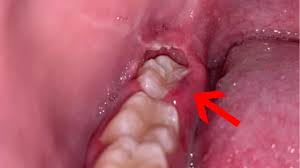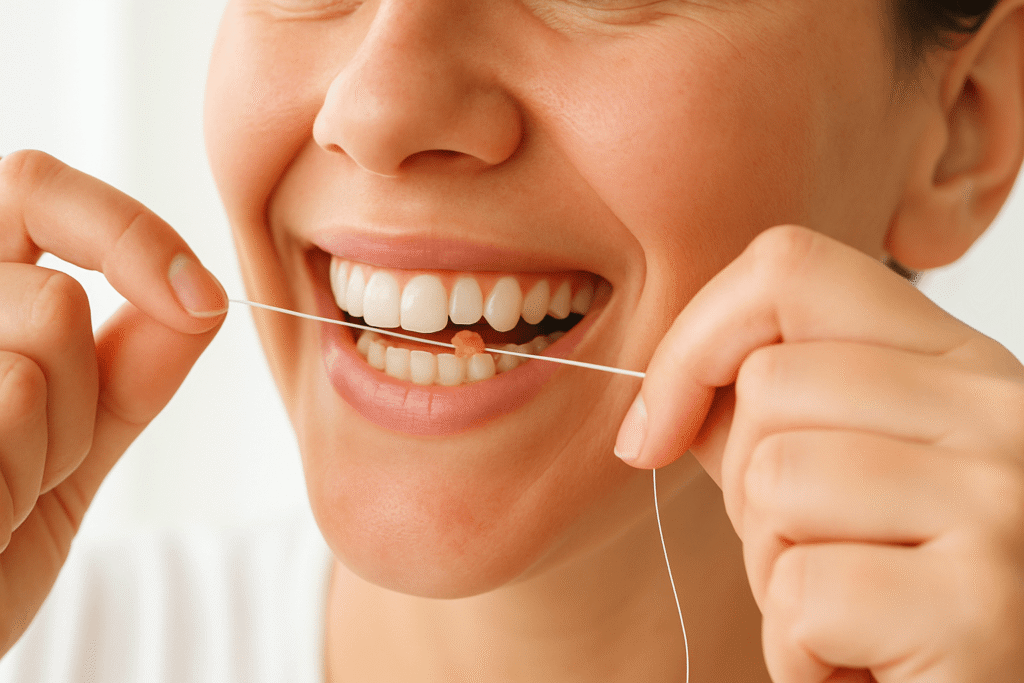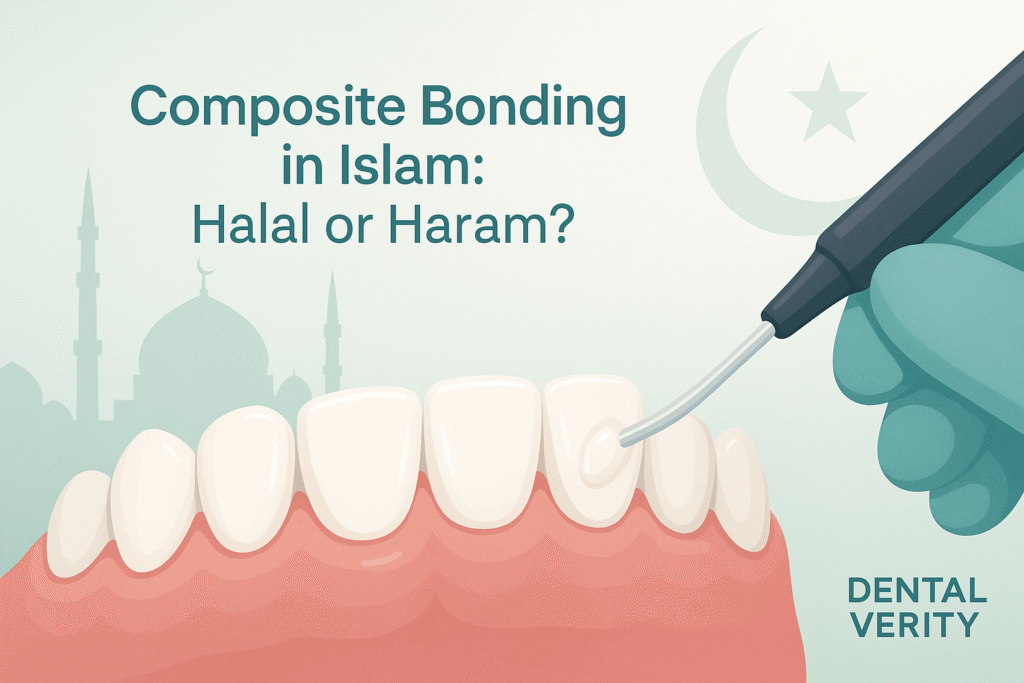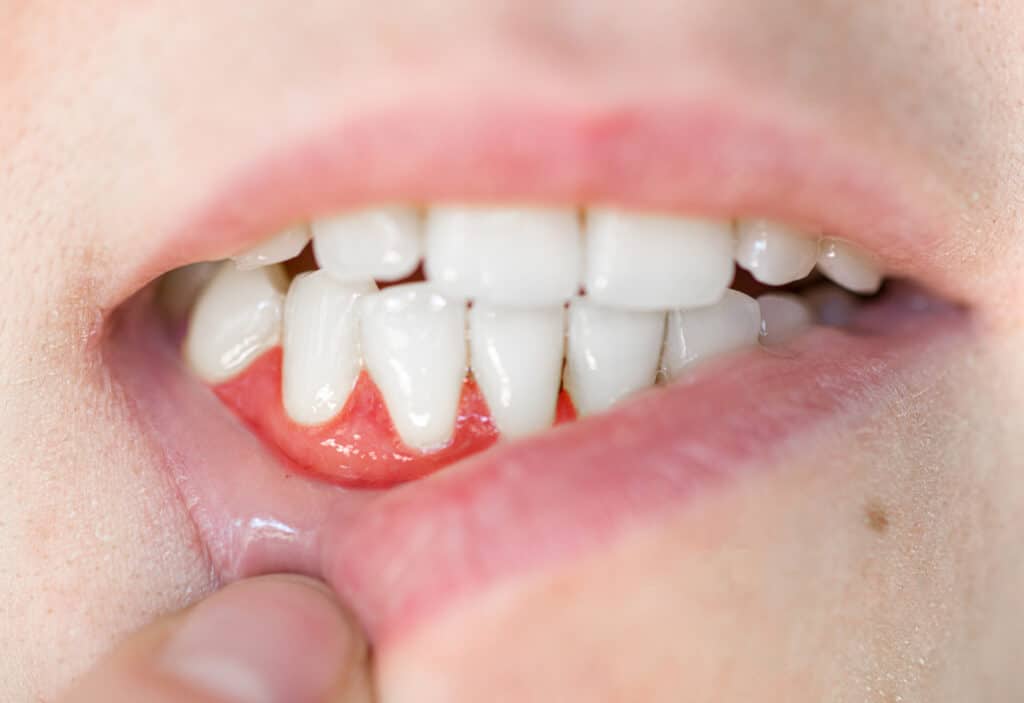
Dealing with wisdom teeth can be a challenging experience, especially when managing the discomfort and healing process after surgery. A gum flap often develops if the wisdom tooth hasn’t fully erupted, making it a perfect space for food particles and bacteria to get trapped. This leads to potential issues like infection and swelling, so it’s crucial to clean the gum flap area effectively to avoid complications. This guide will walk you through the best steps, tools, and techniques to clean beneath the gum flap and promote healing. By following these tips, you can prevent infection, reduce pain, and ensure proper oral hygiene during the recovery phase.
Using the right tools is essential. A soft bristle brush and dental floss help reach difficult areas, while rinsing with saline solution or antiseptic rinse can prevent infection and keep your mouth clean. Remember, proper oral care is key to avoiding further pain and complications. It’s not just about cleaning; it’s about promoting overall mouth health and ensuring your cavity is taken care of. Staying on top of these precautions will help you heal faster and maintain dental care in the long run.
Key Takeaways for Healthy Gum Flap Care
-
Gum flap issues can lead to flap related diseases like pericoronitis.
-
Common symptoms include inflammation, redness, pain, and a bad taste in the mouth.
-
Using the right cleaning tools like a soft-bristled toothbrush and dental floss can help maintain oral health and prevent infection.
-
Regular use of antibacterial mouthwash can aid in infection control and promote gum care.
-
Tool sterilisation is vital to maintain hygiene and avoid introducing bacteria into the mouth.
-
Proper sterilisation and tool maintenance are key to ensuring the hygiene of your oral care routine.
-
Disease prevention and gum issues can be minimized with good oral hygiene and regular cleaning.
Recognizing and Addressing Gum Flap Issues
A gum flap (also called operculum) can form when a wisdom tooth is partially erupted or unerupted, leaving a space for food particles and bacteria to get trapped. This can lead to complications like pericoronitis, a painful gum condition causing inflammation, redness, and pain. If left untreated, it may result in flap-related diseases that impact your oral health. Symptoms like a bad taste in the mouth and swelling need immediate attention. To prevent further issues, regular cleaning with a soft toothbrush, interdental brushes, and warm salt water is essential. Consult a dentist for dental advice and professional cleaning to avoid more severe infections and ensure proper gum care.
Must-Have Tools for Effective Cleaning Under the Gum Flap
Cleaning under the gum flap requires specific tools that can safely and effectively reach this sensitive area. To maintain oral health, it’s important to use the right tools for effective cleaning. Here’s what you’ll need:
-
A soft-bristled toothbrush is perfect for gentle cleaning, helping to dislodge food particles and plaque without causing irritation to the gums. Regular toothbrushing is essential for maintaining gum health.
-
Dental floss (both waxed and unwaxed) is crucial for removing food debris and plaque between your teeth and under the gum flap.
-
An antibacterial mouthwash helps kill bacteria and prevent infection, ensuring a clean mouth. Using CDA-approved mouthwash daily will help maintain oral hygiene and reduce the risk of infection.
-
Sterilisation tools like a UV steriliser or sterilisation tablets are necessary for keeping your tools germ-free and safe to use. Proper sterilisation ensures that harmful bacteria do not spread during cleaning.
-
Regular use of a sulcabrush can help clean beneath the gum flap more effectively and target stubborn debris. It is a technique to help you reach areas that may be hard to clean with just a regular toothbrush.
Remember, dental check-ups with a dental hygienist or Adelaide dentist are essential for monitoring your gum health and getting professional cleaning when necessary to ensure you are following the right techniques for gum care.
Simple Step-By-Step Procedure to Clean the Gum Flap Area
Cleaning under the gum flap is essential for maintaining oral health and promoting flap healing. Follow these easy steps to ensure you clean the area effectively and safely:
-
Rinse your mouth with a warm saltwater solution to clean the area and start the healing process. Swish gently for about 30 seconds, then spit it out.
-
Use a soft, small-headed toothbrush to carefully clean the area under the gum flap. Be sure to avoid causing any damage while brushing.
-
After brushing, rinse again with the warm saltwater solution to remove any loosened debris from the area.
-
To reach under the gum flap and dislodge any food particles, use a low-pressure water flosser. Be careful to point the nozzle away from the flap to avoid aggravating it.
-
Finish with an antibacterial mouthwash to kill bacteria and reduce the risk of infection. This will also help with the healing process.
As a post-cleaning precaution, avoid eating hard foods or sticky foods that might get stuck under the gum flap. It’s important to repeat cleaning after every meal to keep the area clean and promote healing.
Tips for Reducing Pain and Discomfort After Wisdom Tooth Surgery
Dealing with pain and discomfort after wisdom tooth surgery can be tough, but there are several ways to find relief. Here are some effective pain management techniques to help reduce discomfort:
-
Use over-the-counter medication like ibuprofen to manage pain. Always follow the dosage instructions on the package.
-
Apply a cold compress or cold pack to the affected area for 15 minutes on, then 15 minutes off to help soothe swelling and numb pain.
-
Incorporate discomfort-alleviating foods into your diet. Enjoy soft foods like smoothies, yoghurt, and ice cream. The cold temperature provides additional relief while being easy to eat.
-
A saltwater rinse with warm salt water can help clean your mouth and reduce discomfort. Gently rinse to avoid disturbing the surgical site.
-
Coconut oil pulling is another natural remedy. Swish with coconut oil to relieve pain and help remove food debris from the area.
These techniques will not only help with comfort during the healing process but also support faster recovery. Always consult your dentist if you experience persistent or severe pain.
Recognizing and Preventing Gum Flap Issues
After wisdom tooth surgery, it’s essential to understand potential gum flap problems and how to address them. Discomfort can arise, especially if an infection develops. Common infection signs include persistent pain, swelling, fever, or a foul odour from the gum flap. If you notice any of these symptoms, it’s important to contact your healthcare provider promptly to prevent severe complications like an abscess or even a systemic infection. Taking prescribed antibiotics as directed and following good oral hygiene practices, such as rinsing with warm salt water, can help reduce the risk of postoperative infections and promote faster healing. Remember, always complete the full course of antibiotics to avoid the development of antibiotic-resistant infections.
Frequently Asked Questions About Gum Flap Care
1. How often should I clean under my gum flap wisdom tooth?
You should clean under your gum flap wisdom tooth daily. It’s essential to maintain oral hygiene to prevent infections and promote healing. Use a soft-bristled toothbrush and a saltwater rinse to gently clean the area.
2. Is it normal to feel pain when cleaning under the gum flap?
Yes, it’s normal to feel some discomfort when cleaning under the gum flap, especially after wisdom tooth surgery. However, if the pain persists or gets worse, it could indicate an infection. In such cases, consult your dentist.
3. Can I use regular mouthwash after cleaning my gum flap?
It’s best to use an antibacterial mouthwash after cleaning your gum flap. Avoid alcoholic mouthwashes, as they can irritate the sensitive area. A non-alcoholic mouthwash will help keep the area bacteria-free and assist the healing process.
4. How long does it take for a gum flap to heal after wisdom tooth surgery?
Healing times can vary from person to person, but generally, a gum flap may take two to four weeks to heal completely with proper care and oral hygiene. If you notice any signs of infection, contact your dentist.
5. Can I eat solid food while I have a gum flap?
It’s important to avoid eating hard foods or sticky foods that could get stuck under the gum flap. Stick to soft foods like smoothies and yogurt while the area heals to avoid irritating the flap and ensure a quicker recovery.



